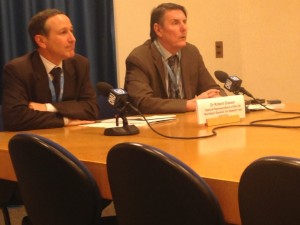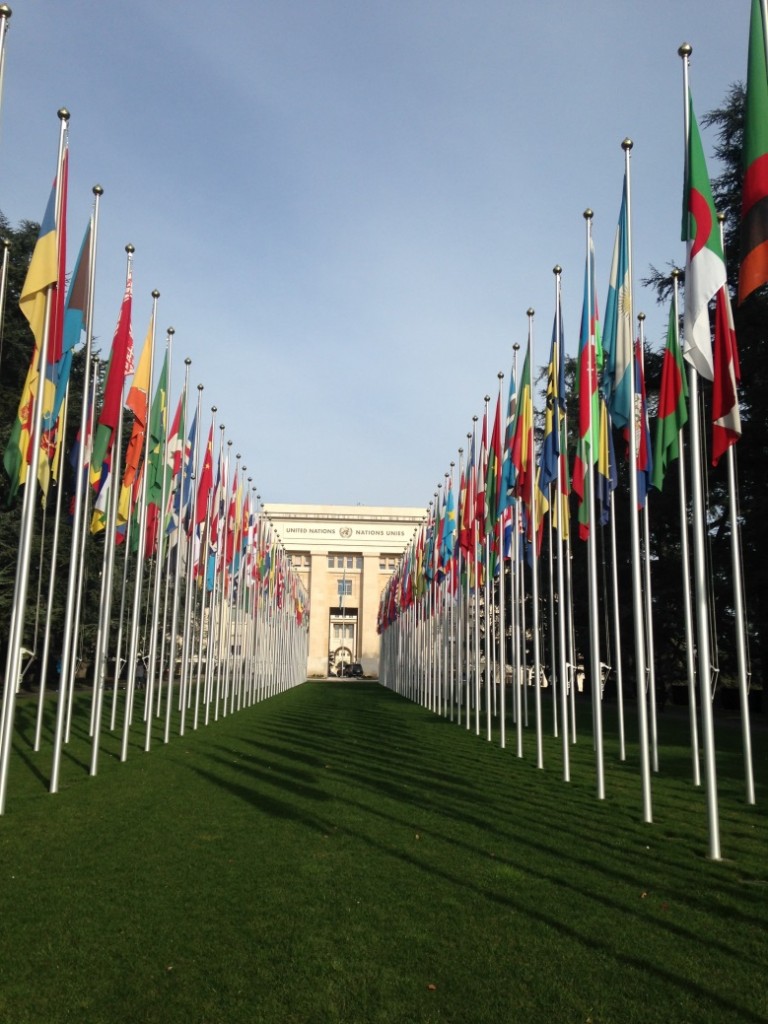Mobilising science to implement the four priorities of the Sendai Framework & the road map to get there….
Blog by: Becky Murphy (Lead researcher on the LPRR project at Kings College London & Capacity Building Officer at Christian Aid
“Science and technology can make significant contributions to resilience. However effectiveness depends on how well science is delivered and translated” David Applegate – US geological survey
On the 27th January 2016, 1000 scientists, policy makers, practitioners and DRR and resilience specialist came together in Geneva for a 3 day conference exploring how to put the Sendai Framework into action. The end goal of the conference was to develop a road map to put the Sendai framework into action.
“We all have a profoundly important responsibility here” (Robert Glasser, UNISDR)
CIRRR in Geneva…
The Kings College London Centre for Integrated Research on Risk and Resilience (CIRRR) team, including the START DEPP Linking Preparedness Resilience & Response in Emergency Contexts (LPRR) project headed out to Geneva to represent the centre’s research and progress in bridging the gap between the scientific, academic, policy and practitioner world.
With the aim of presenting the LPRR project and pushing it to the forefront of the debate on how to utilise science and research for improved practice; the need for more projects that act as a knowledge broker and key communicator between the academic and practitioner world was heavily drawn upon.
Be useful, have a practical purpose…
Doing research that is socially and economically useful is imperative. This is something that the CIRRR is attempting to champion; research to address and overcome issues, not just identify problems.
Clearly we still need to bridge the gap between scientists, practitioners and policy makers. We’ve made progress but we have by no means cracked this yet.
The tone of day 1 highlighted the need to leverage scientific data and knowledge to act as a core foundation, to raise awareness of risk, to validate indigenous knowledge and to increase the capacity of at risk people, policy makers and decision makers to identify, monitor, prepare for and adapt, respond, recover and transform with ever changing risks.
Same chat different platform? Is it not time to act?
However, does this not sound like the same discussion that the sector has been having over and over again?
Challenge ways of working…
A number of speakers raised the issue that there is a lot of innovation, pilots and exciting projects going on. Many of these have been very successful and identified new, effective ways to do things. However these innovations get stuck, they stay as pilots and do not go any further. They become a shiny paper, they are presented, talked about and praised but are not put into action.
Unified, the conference asked why? Why this is the case? Why don’t we take forward these successful innovations? We need to understand what is blocking organisations, governments and communities from changing ways of working, why they can’t transform to learn, improve, tackle root causes, reduce vulnerability and strengthen resilience. We need to identify what the problem is and see it through to tackle this. This is crucial.
Core Messages…
“If we don’t get a handle on preventing disasters we will never be able to cope with what is coming ahead” Dr Robert Glasser
DRR is an investment not a cost. It was clear that the scientific and academic community have an important role to play in leveraging the actions required to meet the Sendai Framework. It was fantastic to see that the LPRR project is attempting to address many of the messages highlighted by the conference. Primarily:
- The need and importance of harnessing expertise from national and local universities and research institutions
- The importance of utilising local, indigenous knowledge
- The need for longer term, flexible, consistent funding
- The need to identify, understand and address root causes of vulnerability at all stages of humanitarian and development interventions
- The need to build local capacity to prepare for, respond to and recover from ever changing risks and shocks
The Road Map…
The full road map that has been developed to guide us in meeting the Sendai Framework can be found here: http://goo.gl/AUWMub
However, reflecting on the LPRR project and the action lead research work that CIRRR is pioneering; here is a snap shot of Priority 4 “Leveraging Science through Capacity Development & Research” where a number of core messages were put forward.
Leveraging science
- We need communication and facilitation of different types of knowledge
- We need transformational development to reduce risk
- We need to advance the role of social science
- We need a better understanding of trade-offs in development choices and pathways
- We need to focus on the framing and presentation of scientific results for decision making
- IRDR can support through developing a national scientific advisory committee
- We will create a risk management knowledge centre
- We need a global platform as an opportunity to continue science-policy dialogue
Capacity development
- We understand the need for capacity development
- We need to mentor young scientists and school children on Disaster Risk Reduction (DRR)
- We need to use a science and technology data base
- We need to focus more on understanding the root causes
- We need periodic reviews of needs, new science and research gaps
- We need to utilise science and technology to build capacity
- Science needs to be useful usable and used
- Technology exists to be able to implement a nation-wide universal robust emergency communications system
- Funding for research and capacity building needs to be flexible, long term and predictable
- A resilient community it knowledgeable, socially cohesive and well connected and has well maintained infrastructure and well supported services
Closing Remarks
Finally, just three weeks into his new role as the head of UNISDR, Dr Robert Glasser formally ended the 3 day conference with the following closing remarks to remember and take back to our organisations and institutions.
The points marked with a * are directly supported and aligned with the LPRR in emergency contexts research and project.
- Remember DRR is strategically situated to adhere to all of the international agreements from the Paris COP to the SDG’s
- The science of DRR can support work on habitat 3 and the Humanitarian World Summit this year
- The role of Gender in DRR is crucial. We need to look at women in terms of their capacity and added value not just as a vulnerability *
- We need fresh strategic thinking around what governments are setting out and doing in terms of DRR *
- We need integrated multi-disciplinary research. Research that bridges natural and social science, quantitative and qualitative data, micro to macro scales. *
- The role of professional knowledge brokers, who can communicate between scientists, policy makers, governments and community members, is becoming increasingly more crucial. *
- End users of science must be included from the very beginning *
- Technology is not enough, we need to explore behaviour and culture and a lack of awareness around what to do with risk information *
- Sustainable funding which is long term, flexible and reliable is needed for DRR and resilience building. *
- Funding for DRR will increase in the future.
- Remember DRR is tangible and we can implement it. *
- We need to commit to capacity building and bridging links with academia, government and civil society. *
- We have launched a young scientist platform to encourage intergenerational science.
- Our road map has mapped out some concrete actions to help us achieve the Sendai Framework
 For more information on the UNISDR STAG conference or LPRR project please contact Becky Murphy at: rmurphy@christian-aid.org or visit her research page: http://www.kcl.ac.uk/sspp/departments/geography/people/researchstaff/Rebecca-Murphy/Rebecca-Murphy.aspx
For more information on the UNISDR STAG conference or LPRR project please contact Becky Murphy at: rmurphy@christian-aid.org or visit her research page: http://www.kcl.ac.uk/sspp/departments/geography/people/researchstaff/Rebecca-Murphy/Rebecca-Murphy.aspx

